Implementation and Assessment of a Multipurpose Appraisal-Driven Emotion Awareness Tool Based on Self-Report
Mattia A. Fritz
TECFA, Université de Genève
Jury: M. Bétrancourt, T. Brosch, P. Dillenbourg, S. Lajoie
Learning Cognitive Social Affective
Baker et al., 2013; Brackett, 2019; Pekrun & Linnenbrink-Garcia, 2014

Emotion Awareness Tools
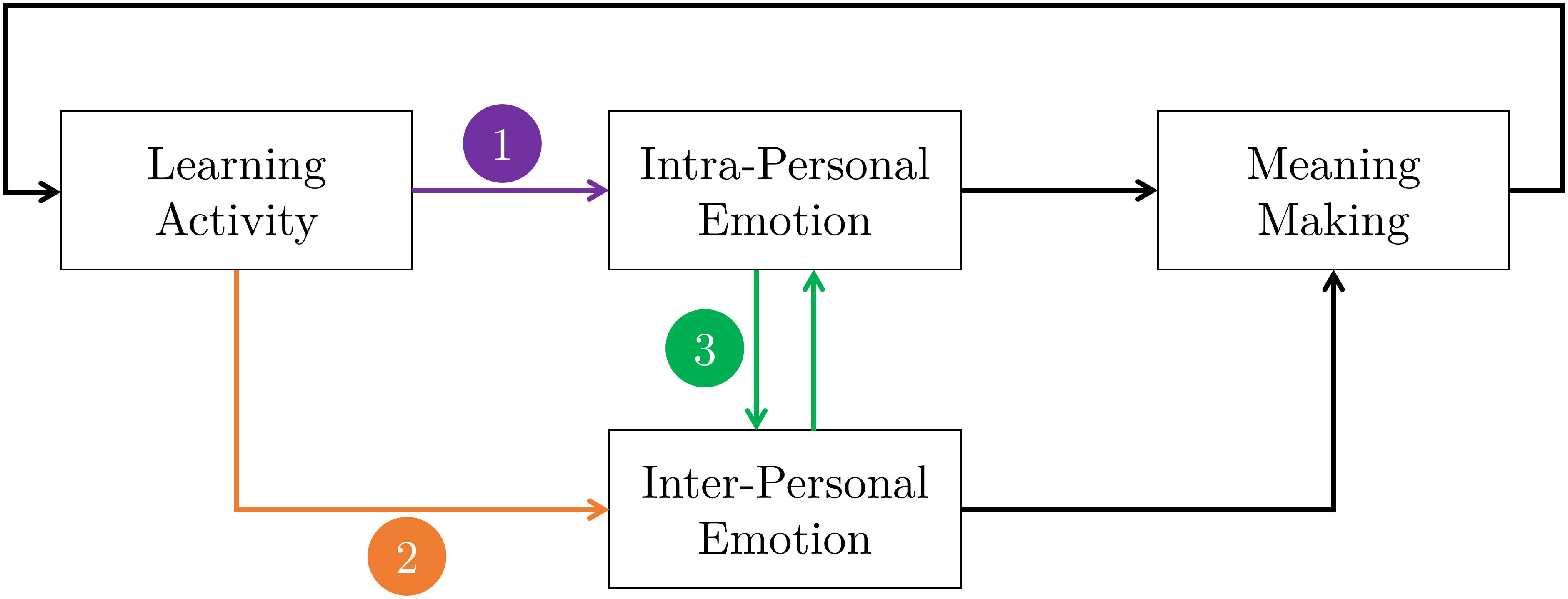

-
Self-Report
Boehner et al., 2007; Fontaine et al., 2013; Lavoué et al., 2020 -
Moment-to-Moment
Graesser et al., 2014; Molinari, Chanel, et al., 2013; Miller & Hadwin, 2015 -
Appraisal theory of emotion
Brosch et al., 2013; Pekrun, 2006; Scherer, 2005; Scherer & Fontaine, 2019
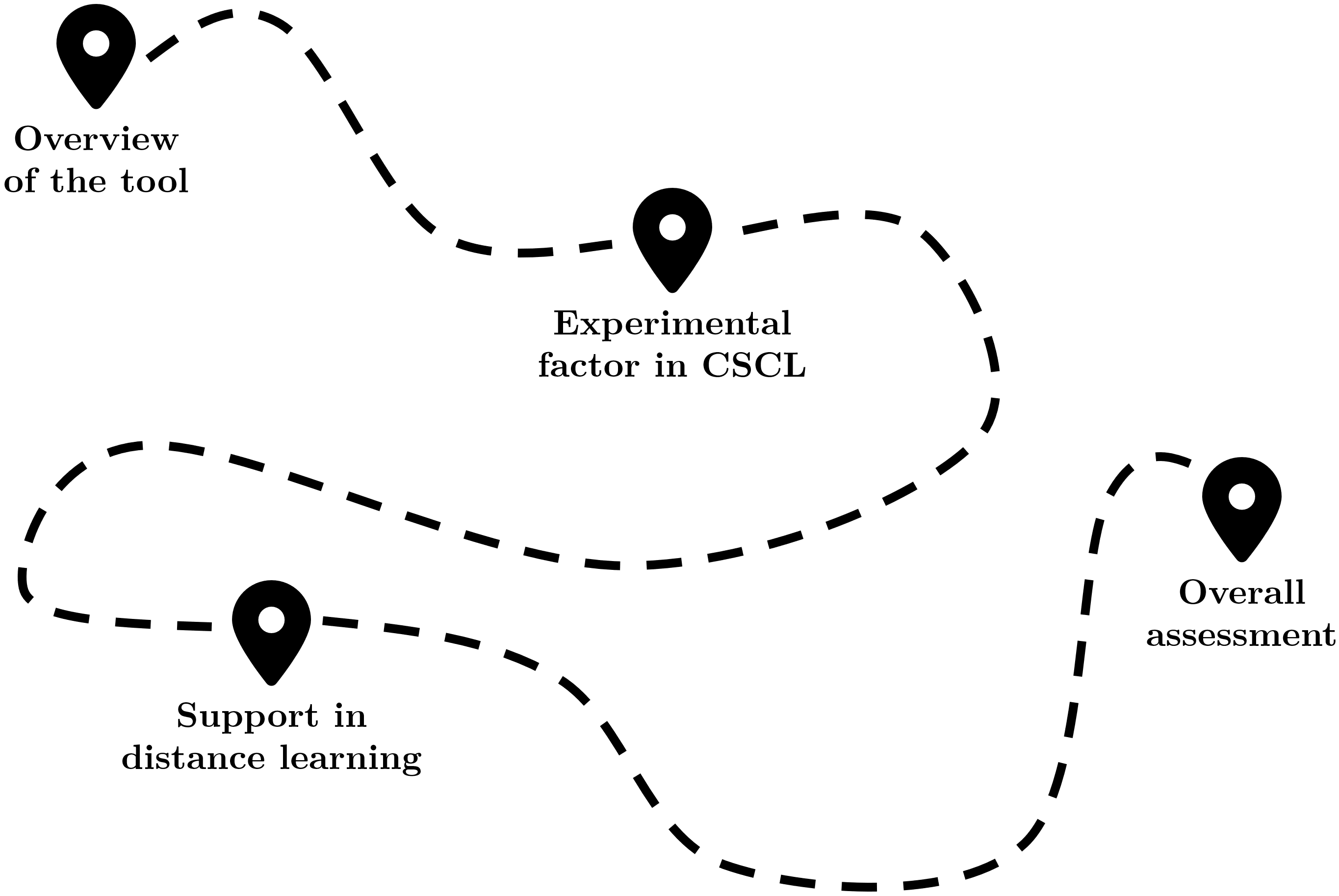
Overview of the tool
Chapters 4, 5 and 6Experimental factor in CSCL
Chapter 7Study rationale
Emotional awareness contributes to mutual-modeling
Dillenbourg et al. 2016; Eligio et al., 2012; Molinari et al.,
2013
— Molinari, Chanel, et al., 2013
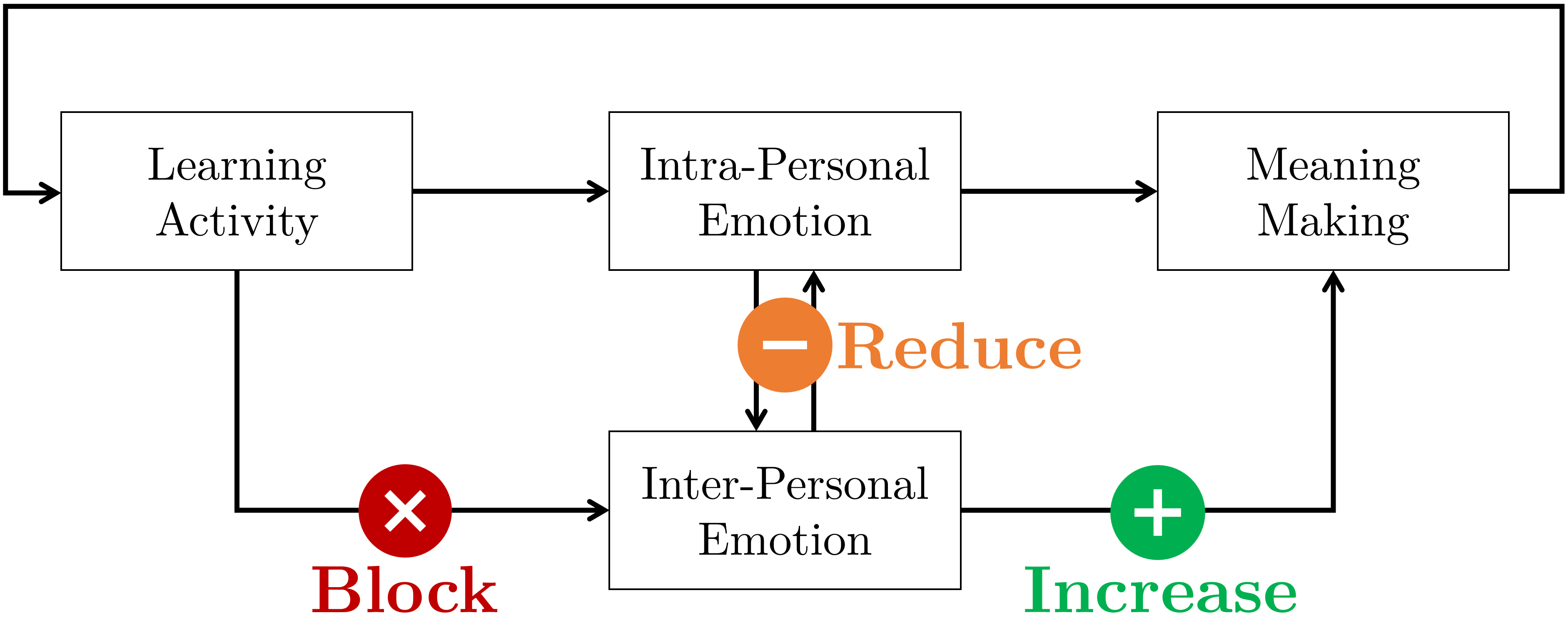
The tool as experimental factor
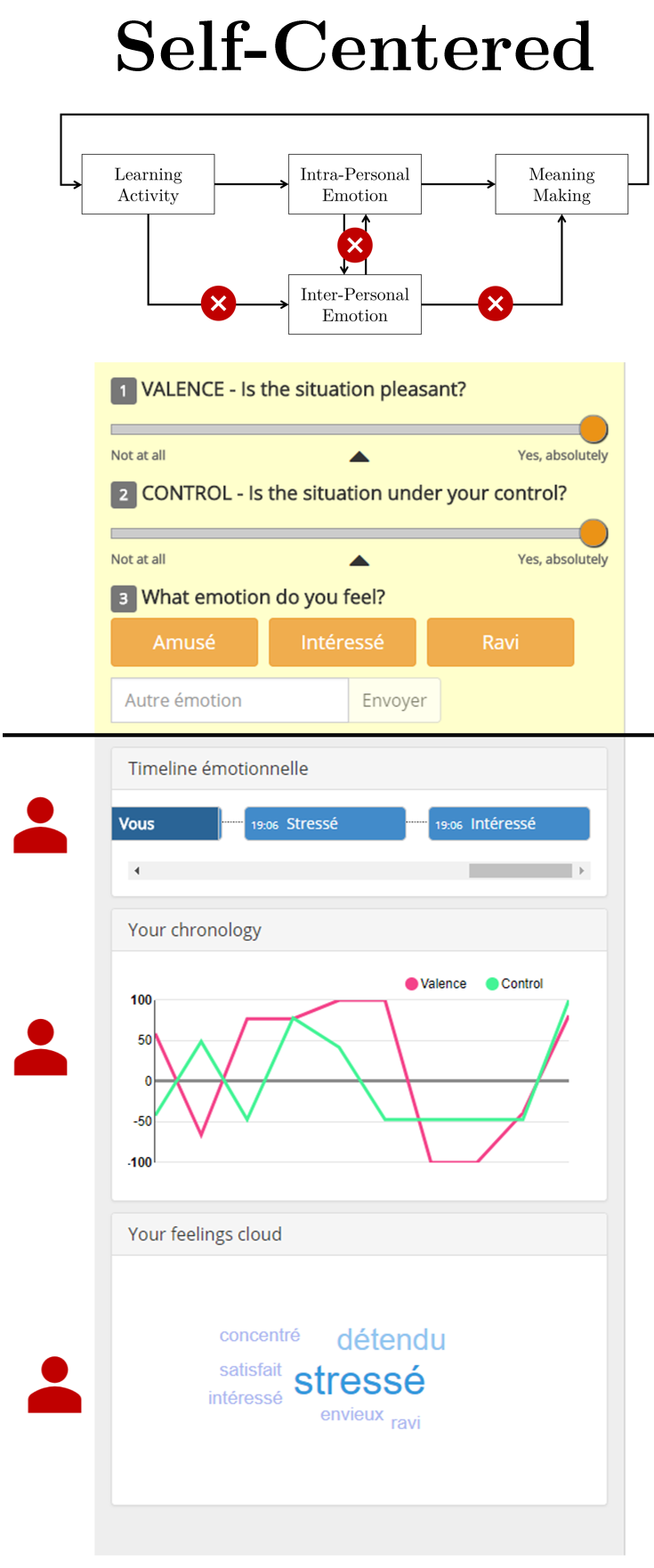
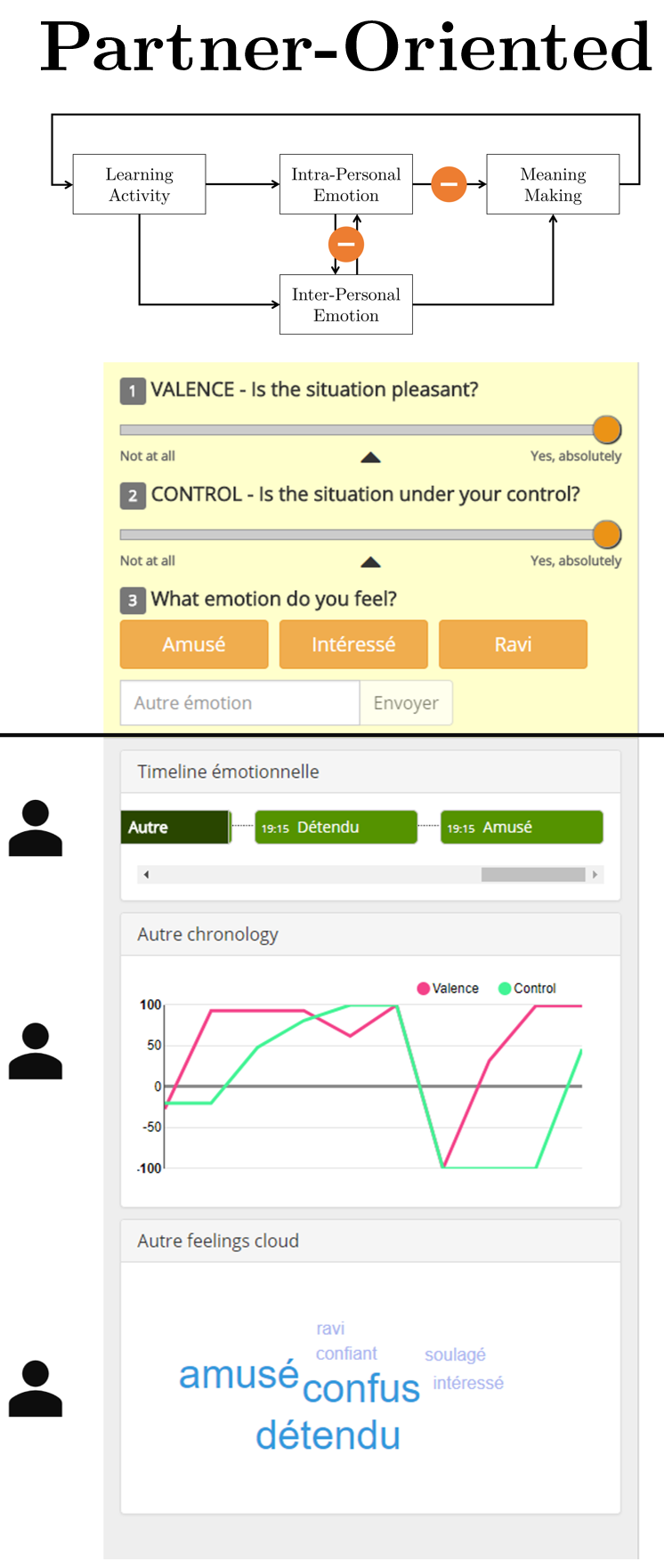
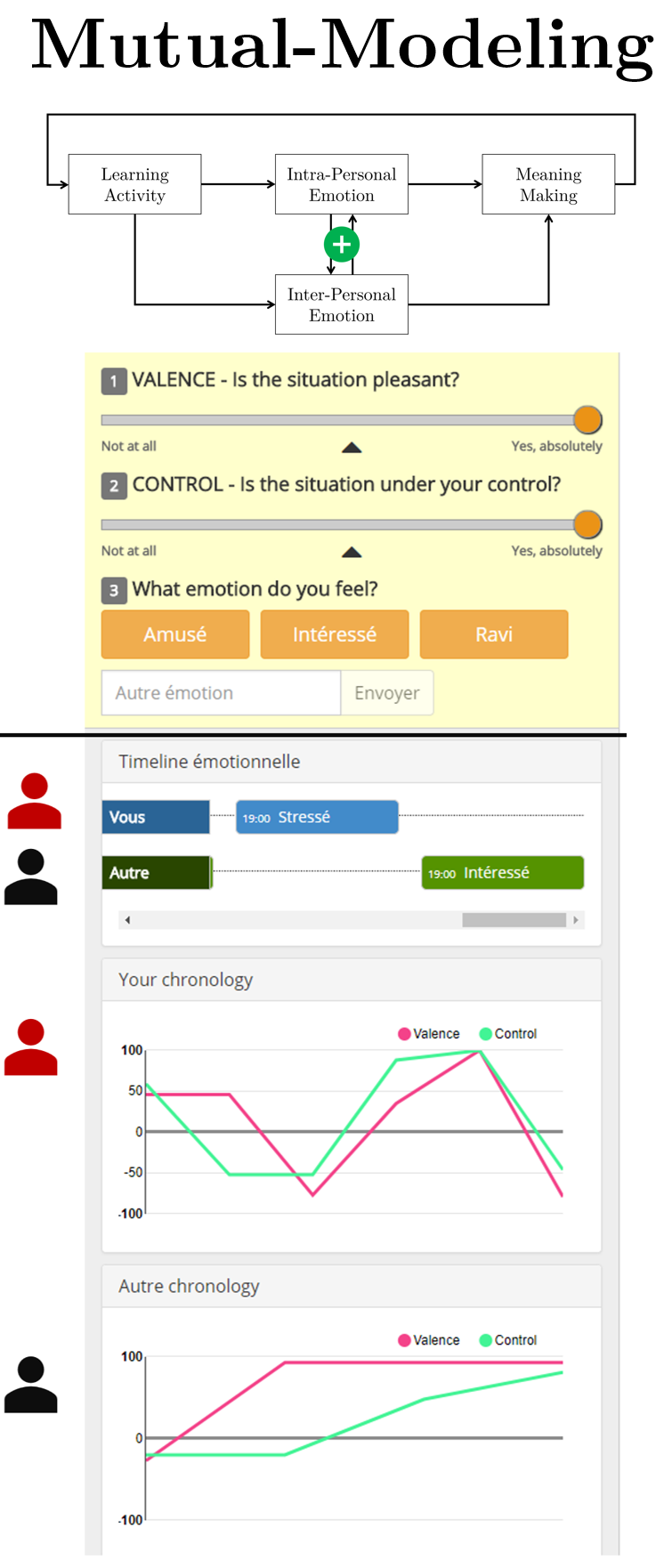
Does a different use of and access to emotional information determine the use of the tool?
Mutual > Partner > Self in expressing and perceiving emotionsSimulated problem-solving task
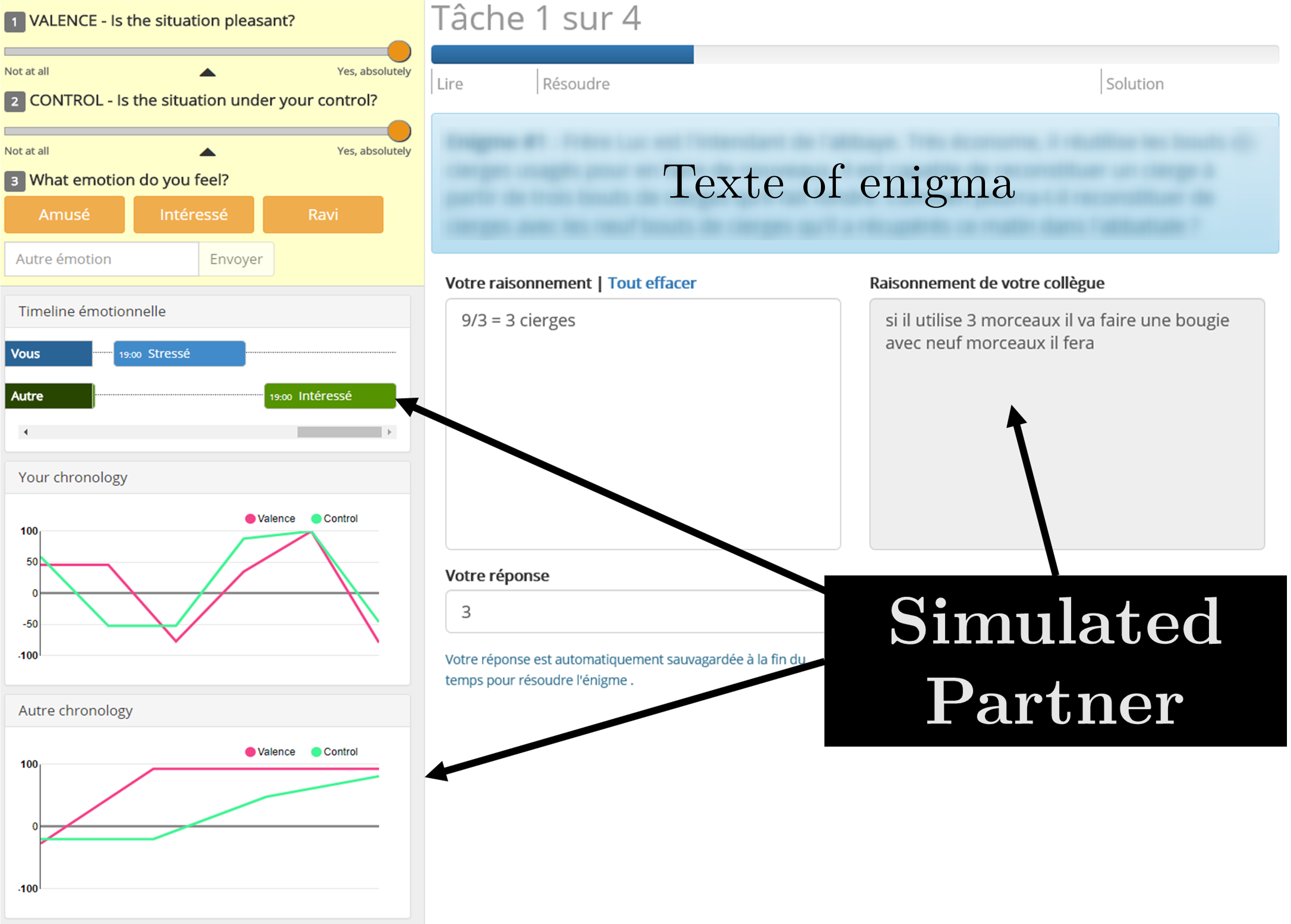
Expressing seems unrelated to interface type

| pairwise | estimate | p.value |
|---|---|---|
| Self - Partner | -0.17 [-6.28, 5.95] | 1.00 |
| Self - Mutual | -3.14 [-8.60, 2.31] | 0.34 |
| Partner - Mutual | -2.98 [-8.90, 2.95] | 0.44 |
Perceiving seems simply socially-oriented

| pairwise | estimate | p.value |
|---|---|---|
| Self - Partner | -40.20 [-71.03, -9.37] | 0.01 |
| Self - Mutual | -31.81 [-59.31, -4.31] | 0.02 |
| Partner - Mutual | 8.39 [-21.47, 38.26] | 0.77 |
Support in distance learning
Chapter 8Study rationale
Emotional awareness projects learners socio-affectively
Jézégou, 2010; Kirschner et al., 2015; Lavoué et al., 2020;
Lowenthal & Snelson, 2017
Tentative scale: Emotional Awareness Usefulness
Crossing literature, existing scales and abstract model
| # | Dimension | Item |
|---|---|---|
| 1 | Frequency | I used the tool frequently (e.g. every time I worked for the course) |
| 2 | Affordance | The tool prompted me to share my emotions |
| 3 | Social Presence | The tool allowed me to feel less lonely during remote learning periods |
| 4 | Self-Understanding | The tool allowed me to better understand my emotions |
| 5 | Understanding Others | The tool allowed me to better understand the emotions of my colleagues |
| 6 | Self-Other Comparison | The tool allowed me to compare my emotions with those of my colleagues |
| 7 | Self-Regulation | The tool allowed me to regulate my emotions |
What is the perception of usefulness of the tool and does it change over time?
Support in distance learning
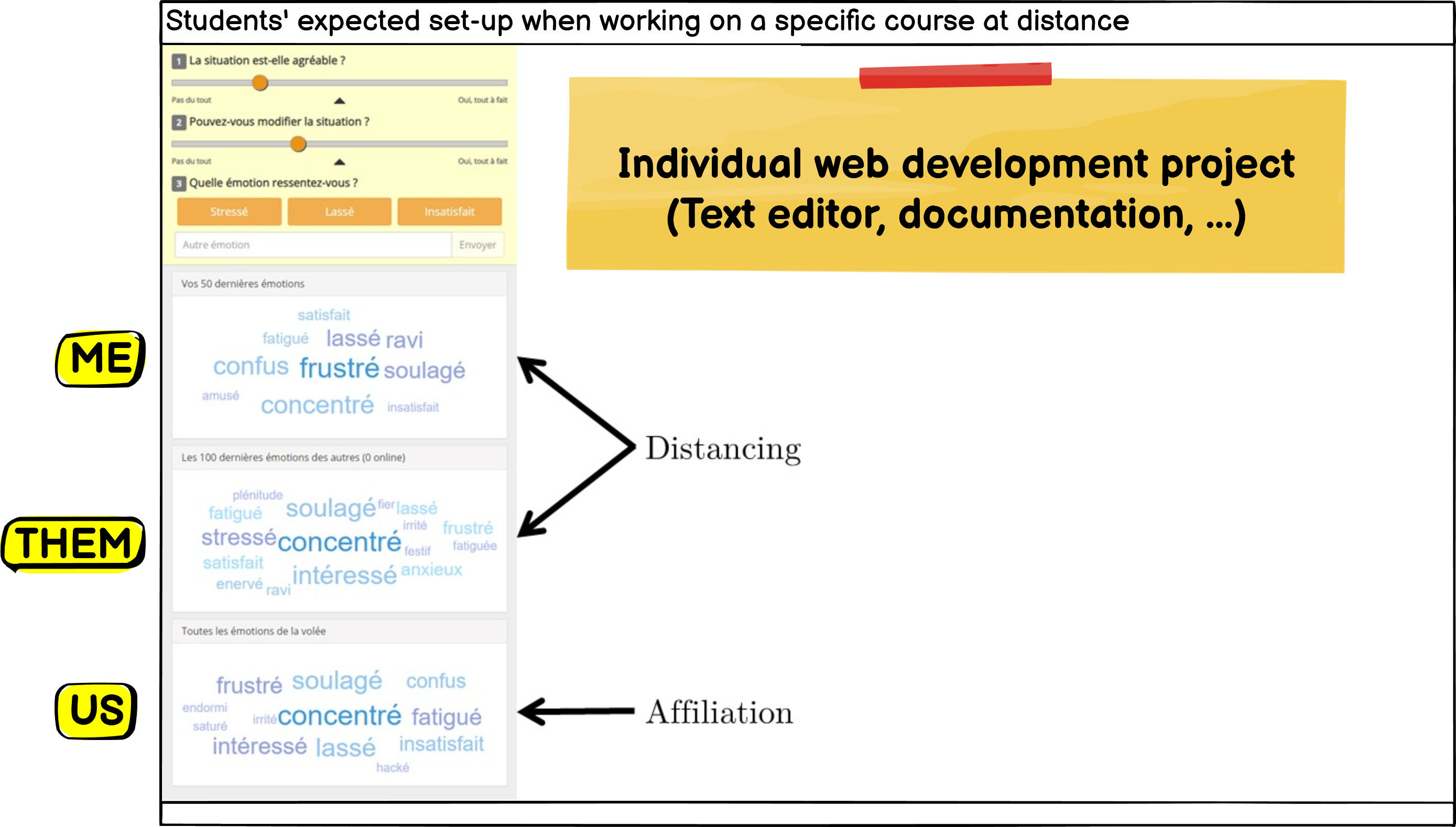
Perception of usefulness drops after (non) use

Psychometric properties
| \(\omega_h\) | \(\alpha\) | \(\omega_{tot}\) | Uni |
|---|---|---|---|
| 0.6 | 0.86 | 0.9 | 0.86 |
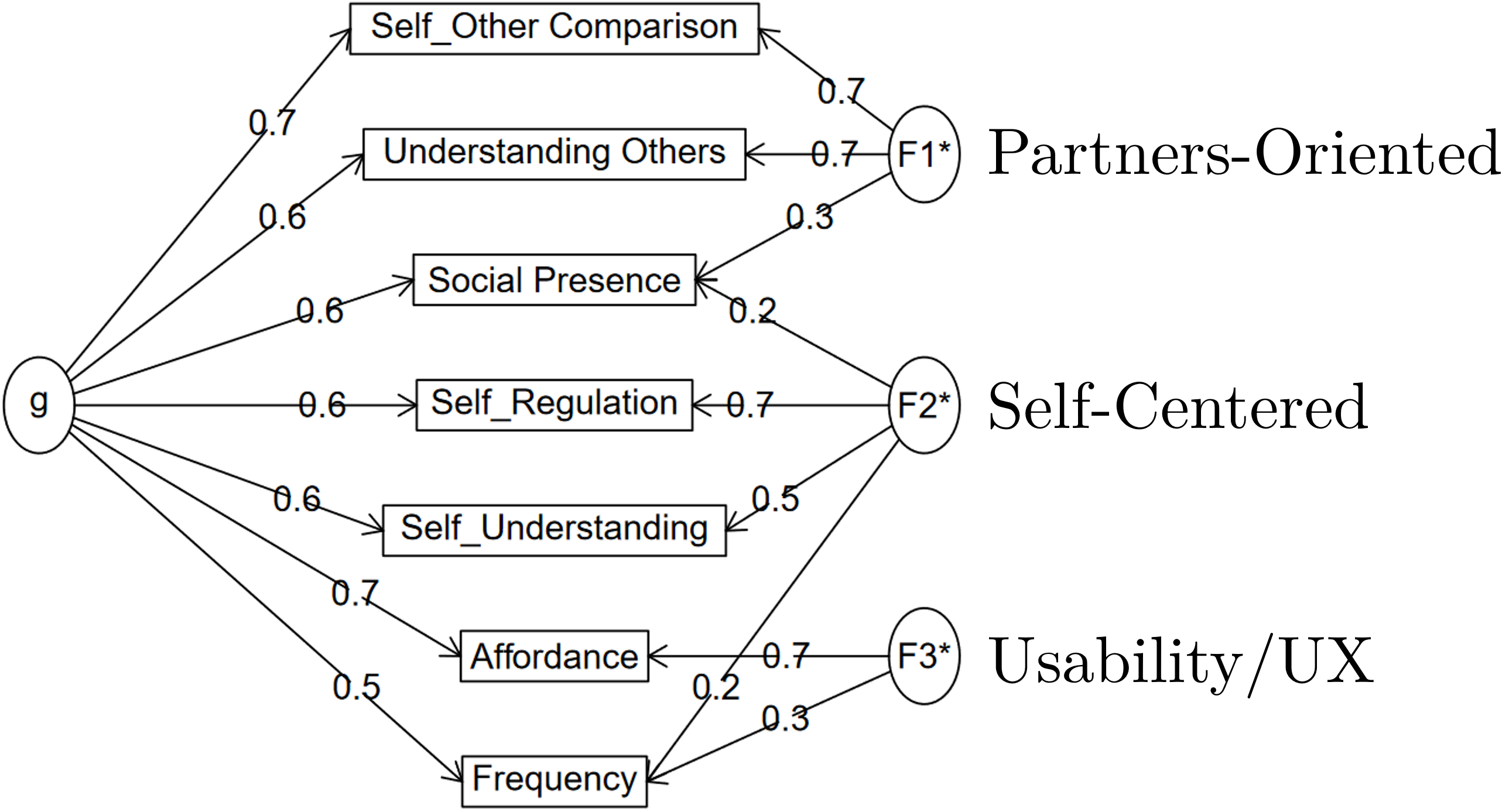
Overall Assessment
Chapters 9 and 10Data-driven assessment
System Usability Scale 73.5(12.8)
Below 80 target (Lewis & Sauro, 2018), above 67.8 (NA)
for tool by Feidakis et al. (2014) [N = 40]
9 out of 10 emotion labels belong to EATMINT circumplex
Lexicalized emotions seem useful for the purpose [N =
1097]
3 out of 4 expressions accepted suggested labels
Interest to compare with a random generation of labels to test
base rate acceptance [N = 1097]
So far, so good?
Main limitation of the model


N-Dimensional Spaces
Number and kind of appraisals and feelings should be based upon research/pedagogical objectives
Multipurpose toolbox
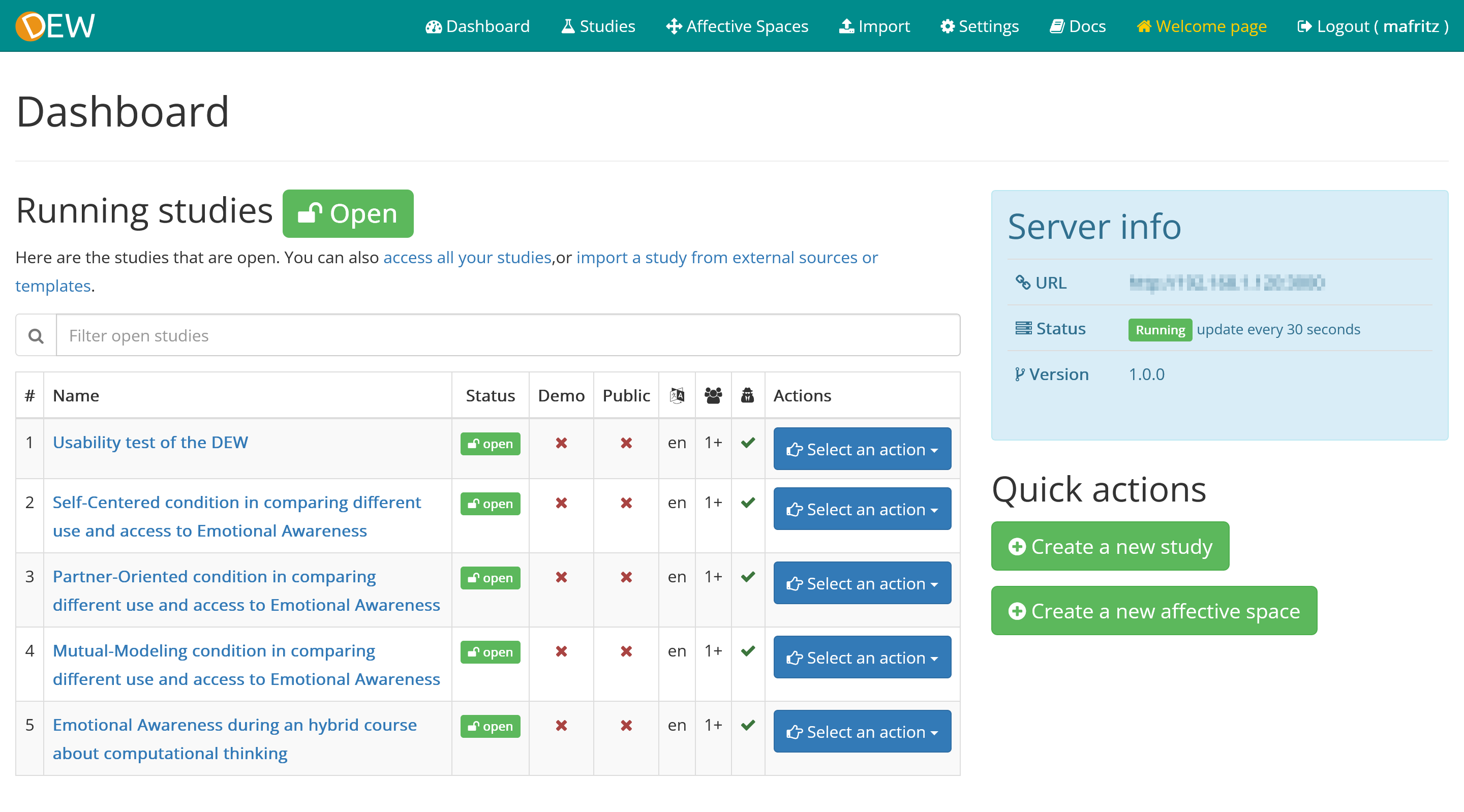 toolbox.dynamicemotionwheel.ch
toolbox.dynamicemotionwheel.ch
Thank you for your attention !
Presentation created with
Reveal.js.
